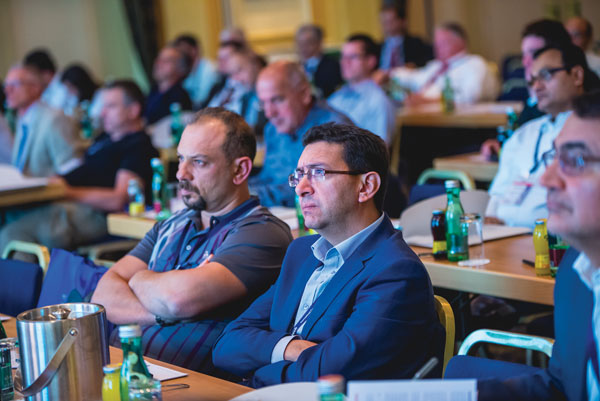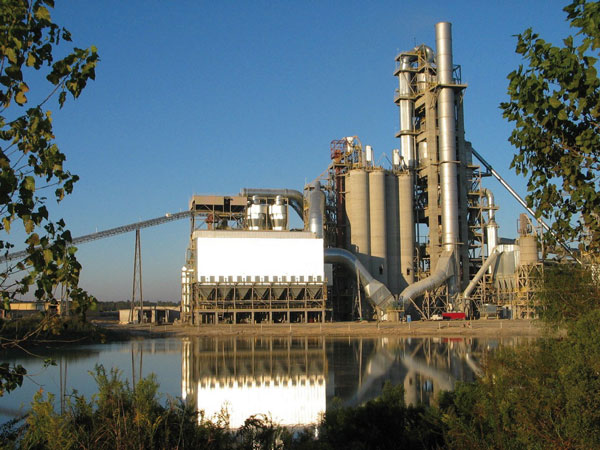Looking forward to Orlando
Following the Cemtech Europe 2015 Technical Workshop, Dr Clark looks forward to the next workshop of its kind to be delivered in Orlando, USA, in December. With a two-day edition lined up, this month’s Technical Forum provides a timely opportunity to outline changes to the programme format and review course content tailored for the Americas’ audience.

Following Cemtech Europe 2015 Technical Workshop, preparations for
the two-day Orlando edition in December are in full swing
The busy schedule of International Cement Review, the Technical Forum and Cemtech conferences mean that this month’s Technical Forum article is being written immediately after the Cemtech Europe 2015 conference in Vienna, Austria.
Simultaneously, Cemtech hosted a three-day technical workshop led by the Technical Forum moderator. It was the fifth workshop of its kind to be delivered, following its first edition at Cemtech Asia in Kuala Lumpur back in June 2014.
The next Cemtech Technical Workshop will immediately follow Cemtech Americas in Orlando, Florida, in December 2015. This will be a two-day workshop requiring somewhat of a rethink in format and course content.
Meeting regional needs
The format to date has included an overview of latest best available technology for cement manufacture, moving on to the optimisation of the cement manufacturing process, and finally considering some of the current and future challenges facing cement manufacturing. This has worked well, and the programme and content is flexible enough to allow the optimisation and challenges section to be tailored to the particular interests and requirements of the participants at the particular workshop location. Best practice, optimisation priorities and current and future challenges do vary from region to region around the world. For example, in Orlando there will certainly be the need to cover mercury emissions and the latest NESHAP requirements.
For Orlando the programme will be completed in two days retaining the broad appeal and coverage, together with the flexibility to tailor the programme to the interests of the participants. The programme will be updated and extended to maintain relevance as cement manufacturing technology and the cement industry move on.
A closer look at cement production
Day one will start with an introduction to what we are ultimately trying to achieve in the industry. That is the manufacture of cement and that begins with the manufacture of cement clinker.
Clinker is composed of silicates, aluminates and aluminoferrites of calcium. Therefore, the workshop starts with that composition, the raw materials and processing required to manufacture clinker. That leads us to the requirement to source raw materials providing two-thirds by weight of lime (on a loss-free basis) together with the silica, alumina and iron oxide to combine with the lime in the correct proportions. Then the progressive size reduction and mixing of those raw materials to the finely divided, homogenous kiln feed powder that we deliver to the cement kiln.
In the kiln the mixture of raw materials is heated to the temperatures required to calcine the lime bearing raw material (convert it to a loss-free basis) and combine the liberated lime with the silica, alumina and iron oxide to form the clinker minerals. Clinker combination will therefore be well covered, together with a detailed look at the combustion of the fuel required to attain the necessary temperatures. The clinker intermediate product is then ground together with gypsum and supplementary cementitious materials in the cement. Grinding the clinker into cement is an often neglected part of the integrated cement manufacturing process.
The Cemtech technical workshop needs to cater for the needs of participants from cement grinding plants so must provide good coverage of the technology involved.
In Orlando this review of current best available technology will be completed in the first three-quarters of a day.
Production optimisation
Maximising output and sales
The premise that in a strong cement market all produced cement can be sold leads us to optimising production. In this market environment the optimisation efforts focus on maximising output and sales. That is because of the marginal value of each additional tonne of sales. Therefore from a technical perspective how can we push the cement process to deliver higher output and productivity? Where might the bottlenecks preventing this arise?
The workshop covers the means to push cement kilns to produce more clinker. That inevitably leads to the factors affecting the amount and handling of the exhaust gases from the kiln.
Minimising costs
Maximising productivity is fair enough in the happy scenario where all the cement that can be produced can be sold. Unfortunately that is not the case in many cement markets around the world. As a result, minimising costs becomes an overriding optimisation priority. In fact minimising costs is always an optimisation priority for any manufacturing organisation as it boosts margins and the contribution of each sale. So minimising costs is important, irrespective of whether all the product can be sold or not.
Central to minimising costs is fuel consumption as this represents often the largest cost in a cement plant. This leads to the topic of alternative fuels. For a grinding plant, electricity cost, raw material (clinker) cost and manpower cost will be the major considerations. In truth a whole workshop could be dedicated to topics such as alternative fuels, but time constraints and the broad scope of the Cemtech technical workshops means that only an overview is possible.
Quality improvement and product diversification
In an over-supplied market improving quality or developing special cement products to secure sales might be an optimisation priority. Such over-supplied markets are intensely competitive so minimising costs, improving quality and product development have to be priorities.

While the Cemtech Americas Technical Workshop will see
a modified format, it will remain tailored to current topics
and aim to address the needs of the region’s cement industry
This optimisation section of the workshop will also be completed in three-quarters of a day in Orlando taking the workshop to lunchtime on day two. The optimisation section will be segmented into a quarter-day for productivity enhancement with one hour on kilns and an hour on cement finish grinding.
Then a quarter-day on cost minimisation with an hour on alternative fuels and an hour on electricity and manpower. Finally a quarter-day on quality optimisation. It will be a tight but varied, and hopefully interesting programme.
Focus on the future – meeting environmental challenges
The final section of the technical workshops has a moveable agenda. Although the broad theme is “current and future challenges” the same content has never been delivered twice, for the reason that those challenges change with time and location in the world.
For Orlando this will be the last half-day of the workshop. Emissions from cement kilns will have to be addressed, including volatile emissions such as mercury. These will require a quarter-day.
Impact of COP21
The United Nations Climate Change Conference, COP21, will be concluding in Paris on the same day as the Orlando technical workshop. No-one can say for sure what will be agreed at that conference, but there are straws in the wind that far-reaching agreements might be made. If such agreements are reached they will almost certainly have demanding consequences for cement manufacturing. The final quarter-day of the workshop will consider those implications and the possibilities for the manufacture of cements with less embodied CO2.
Sounds like a busy, focussed and compact two days in Orlando on 8-9 December 2015!
|
The next Cemtech Technical Workshop will be held on 8-9 December 2015 at the Ritz-Carlton Orlando, Grande Lakes, Florida, USA. Register at: www.Cemtech.com/Americas2015/Workshop |

